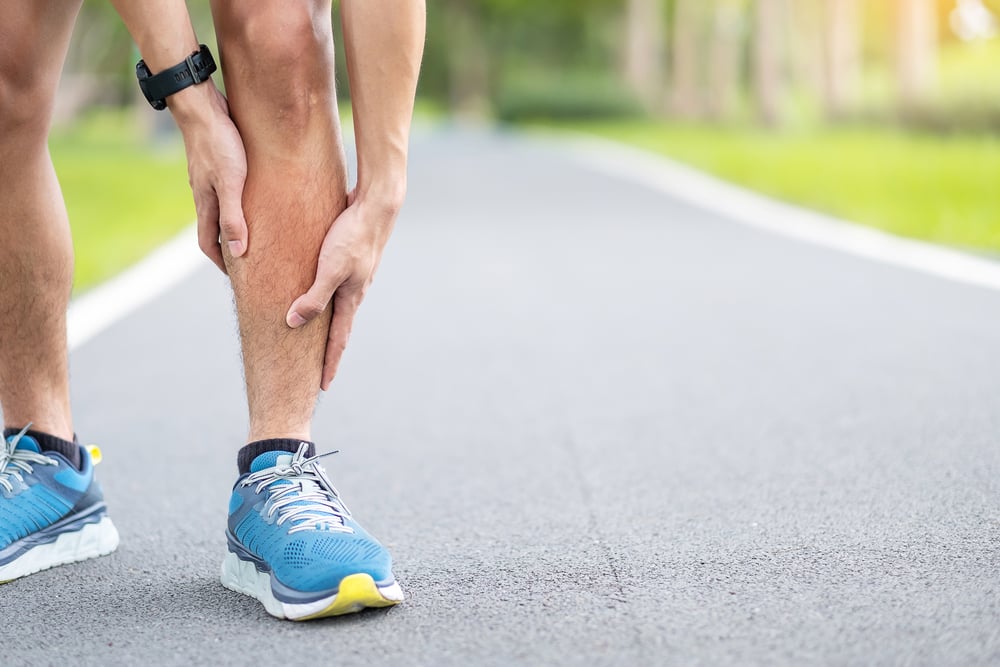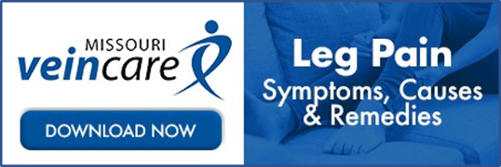Is Your Leg Pain After Running Just Soreness or Something More?

Running is a fantastic way to stay fit, reduce stress, and build endurance. But if you're experiencing persistent leg pain after running, it can get in the way of your goals and, more importantly, life itself.
A little discomfort after a hard workout might feel normal, especially if you're pushing your limits. But what if the pain starts feeling unusual, becomes a regular occurrence, or doesn't resolve as quickly as it used to? Could it signal something beyond muscle fatigue?
Here’s a breakdown to help you differentiate typical running soreness from potential vascular issues and get back to pain-free running.
What Does Normal Post-Run Muscle Pain Feel Like?
For most runners, a little soreness after a tough run is part of the routine. This soreness, known as delayed onset muscle soreness (DOMS), is the result of micro-tears in your muscle fibers caused by exertion. Here's what typical post-run muscle pain looks like:
- Localized pain in the muscles you used most (e.g., calves, quads, or hamstrings).
- Mild to moderate intensity that doesn’t interfere with daily life.
- Short-lived soreness, usually resolving within a few hours to a couple of days.
DOMS often comes after harder-than-usual workouts like hill sprints, longer distances, or adding intensity. While the soreness may feel uncomfortable, it will subside with rest, hydration, and stretching. Ultimately, this type of pain leads to stronger muscles over time.
But when does it stop being "normal"?
When Should Post-Run Leg Pain Raise a Red Flag?
If your leg pain has shifted from typical muscle soreness to something irregular or persistent, it could mean there’s more going on. Warning signs to watch for include:
- Pain that feels deeper or more severe than muscle fatigue.
- Pain during activity, such as pain appearing as soon as you start running or even when walking short distances.
- Consistently experiencing discomfort at the same distance during every run.
- Pain that worsens when climbing stairs or running uphill.
These symptoms could indicate a vascular issue like arterial blockages or venous reflux, conditions that interfere with proper blood flow in your legs.
Are Your Arteries the Problem?
Healthy arteries are vital for delivering blood and oxygen to your leg muscles during a run. If there’s a blockage in the arteries (a condition known as peripheral arterial disease, or PAD), your muscles may not get the oxygen they need. This deprivation can cause pain, also known as claudication.
Symptoms of arterial issues include:
- Pain in the calf, thigh, or buttock during exercise.
- Pain that occurs at a predictable distance regardless of rest days.
- Reluctance or avoidance of hills and stairs due to worsening pain.
PAD pain doesn’t go away with rest alone; it’s a sign your circulation needs attention. Over time, untreated PAD could limit your ability to stay active, making it essential to seek professional care promptly.
Could It Be a Vein Condition?
If arterial disease is ruled out, vein issues like venous reflux could explain your discomfort. This condition occurs when faulty veins struggle to pump blood back up from your lower legs to your heart, causing blood to pool.
Signs of vein-related leg pain include:
- A feeling of heaviness or aching in the legs after exercise.
- Swelling, which may worsen later in the day.
- Fatigue or a general sense of "run-down" legs.
- Relief in the morning after a night’s rest, contrasting arterial pain that doesn’t improve overnight.
- A diminishing ability to perform athletically. Athletes with a vein condition often are unable to meet prior physical goals and may not know why.
With vein reflux, visible spider veins or varicose veins aren’t guaranteed; often, these conditions manifest as invisible but bothersome symptoms.
Why You Shouldn’t Ignore Persistent Leg Pain
Your body has its own language, and persistent pain is one of its ways of asking for attention. Both arterial blockages and venous reflux can affect more than just your ability to run. Left unaddressed, these conditions can lead to more serious complications, including ulcers, reduced mobility, and other vascular decline.
The good news is that these conditions are manageable and, in most cases, treatable. Advanced diagnostic tools and non-invasive treatments are available to improve your symptoms and quality of life.
What Are Your Next Steps?
If this is sounding all too familiar, here’s what you can do:
- Pay attention: Log your symptoms, noting when and where the pain occurs, how it feels, and how long it lasts. Patterns can help you and your care team identify the underlying issue.
- Practice self-care: Ensure proper recovery after runs with rest, stretching, hydration, and compression socks if needed.
- Consult a specialist: If your pain feels unusual or isn’t improving, schedule a consultation with a vascular care specialist who can identify potential circulatory issues.
At Missouri Vein Care, we specialize in diagnosing and treating both vein conditions in patients who want to stay active and pain-free. You don’t have to accept persistent leg discomfort as your "new normal" or allow it to sideline your life.
Don’t second-guess your symptoms. A free vein screening could offer all the answers you need. Our team is here to guide you back to better leg health with the care you deserve.
Schedule Your Free Vein Screening Today
Take the first step toward understanding your leg pain. Schedule your free vein screening today, and let's get you back to running.




